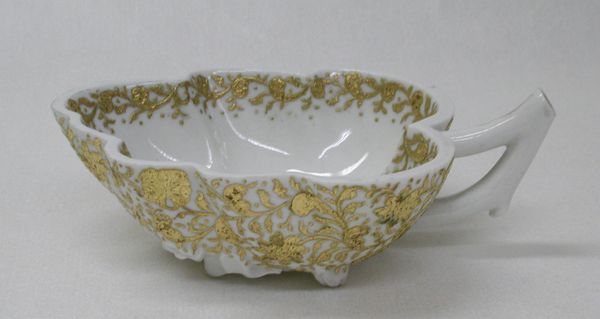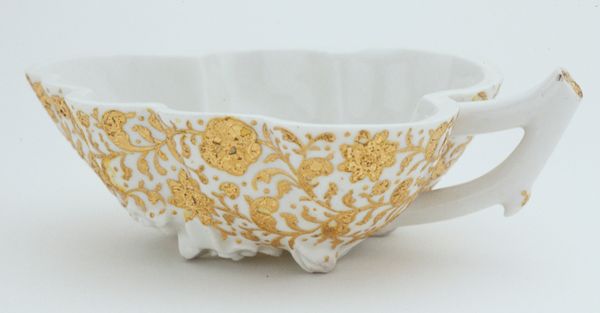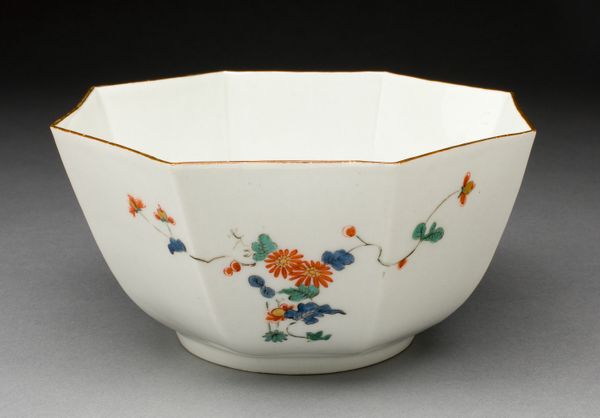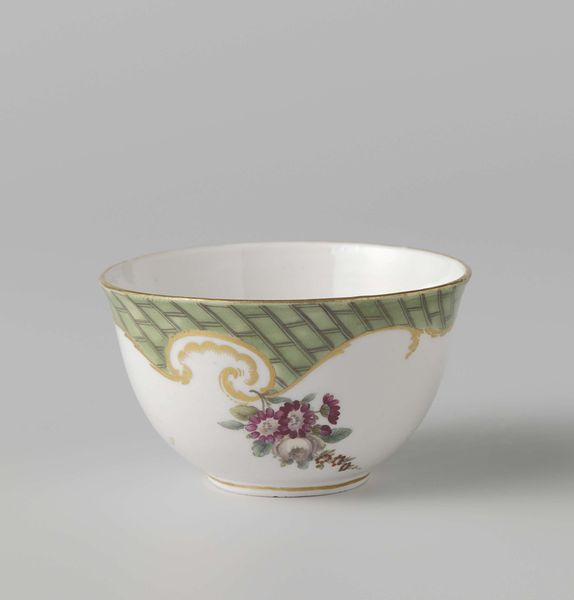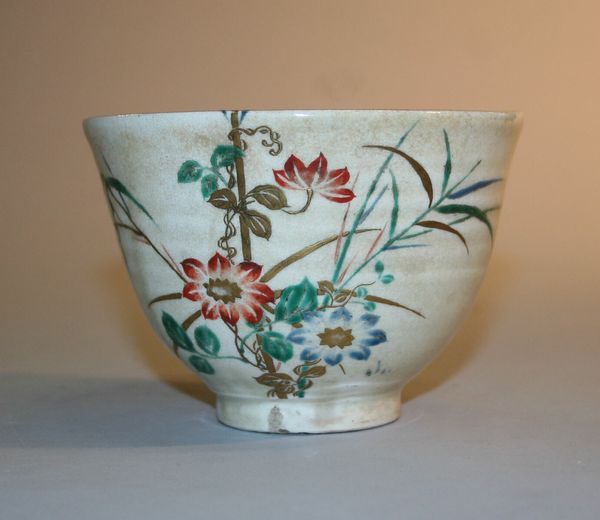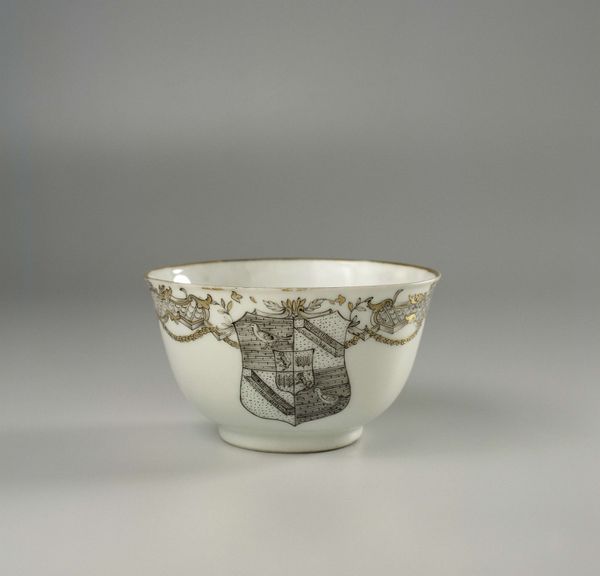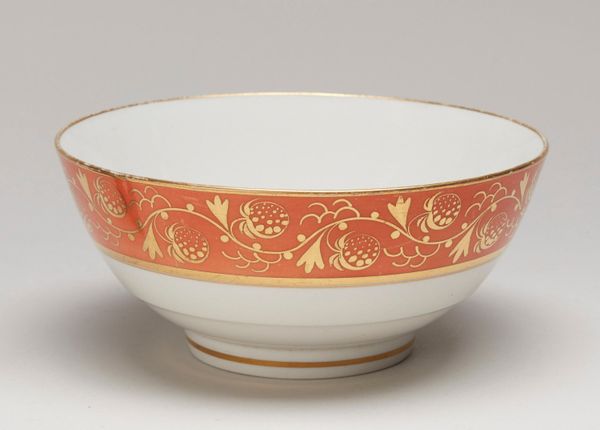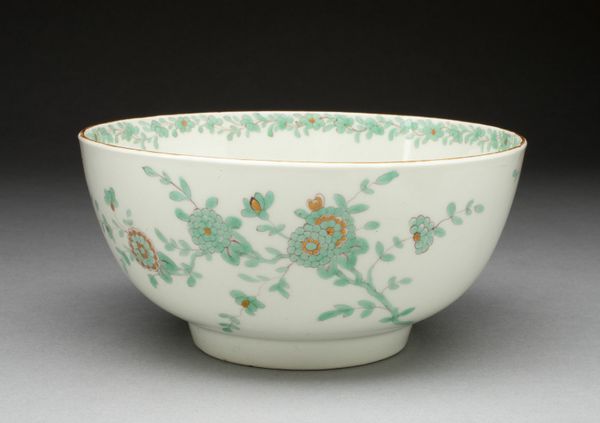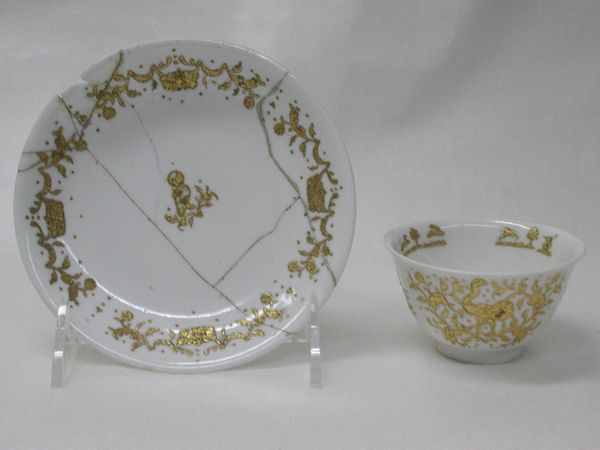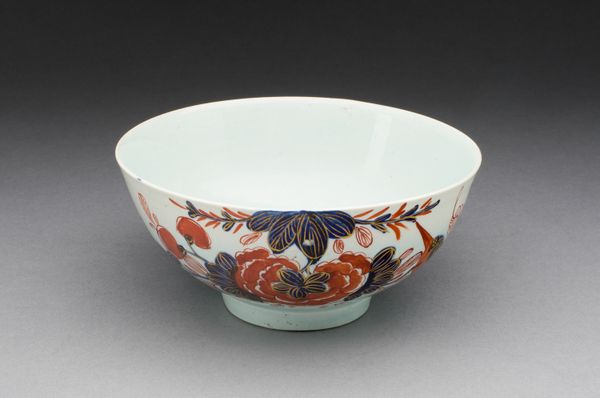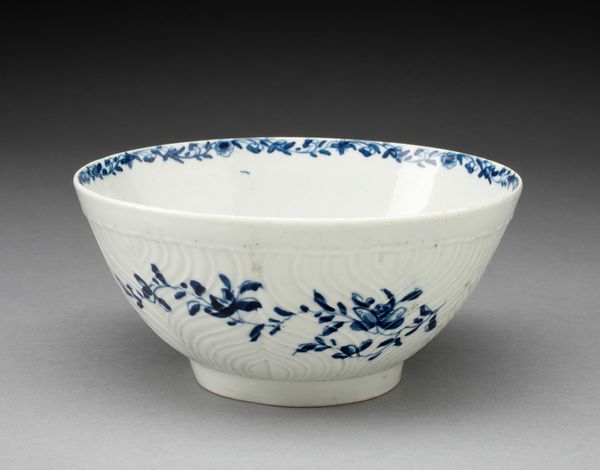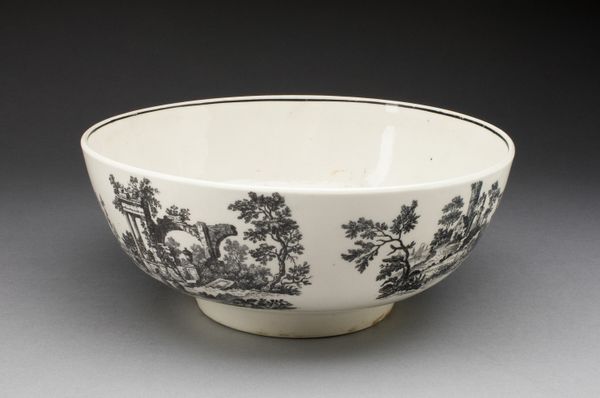
ceramic, porcelain, sculpture
#
baroque
#
ceramic
#
porcelain
#
sculpture
#
ceramic
#
decorative-art
Dimensions: Diameter: 3 1/8 in. (7.9 cm)
Copyright: Public Domain
Curator: Here we have a delicate porcelain teacup, crafted by the Meissen Manufactory between 1715 and 1725. Part of a larger service, it showcases the exquisite artistry of the Baroque period. Editor: The cup appears remarkably light, almost ethereal. The gold decorations pop brilliantly against the pristine white porcelain, creating a captivating visual contrast. Curator: Indeed. Consider the era: porcelain production was still relatively new to Europe, representing immense power, wealth and colonial ambition. Meissen, being one of the first European manufacturers, carried a significant cultural weight. Editor: So, the very material speaks of power. The composition, though, seems intentionally whimsical. These gilded creatures and floral arrangements lack a certain... realness. They appear decorative, stylized. Curator: Absolutely. The scenes painted on the ceramic, they reflect a larger fascination with chinoiserie, a style very popular at the time reflecting Europe's engagement, and frankly its appropriation, of Asian aesthetics. The teacup can be seen as part of a larger colonial project. Editor: That's interesting. I see how the ornamentation hints at far-off lands and imagined luxuries, viewed through a distorted European lens. Structurally, though, note how the artist balanced the ornate patterns with the simple, clean lines of the cup's form. Curator: This "balance" in some way is related to the imposition of Western sensibilities upon what was perceived to be the "exotic other", a gesture central to many injustices throughout the 18th Century. Editor: Fair point. I appreciate your perspective, drawing attention to the power dynamics at play. This cup transcends mere aesthetics; it serves as a reminder of a complex and problematic chapter in history. Curator: Precisely. Seeing this small cup reminds us that the echoes of those colonial enterprises still resound. It compels us to reflect on whose stories are told, and at whose expense. Editor: I initially appreciated the formal elegance. I leave now considering it instead as a reminder to look critically at art. The dialogue has made it even more compelling, as it prompts us to reflect not only on what we see, but also what it truly signifies.
Comments
No comments
Be the first to comment and join the conversation on the ultimate creative platform.
